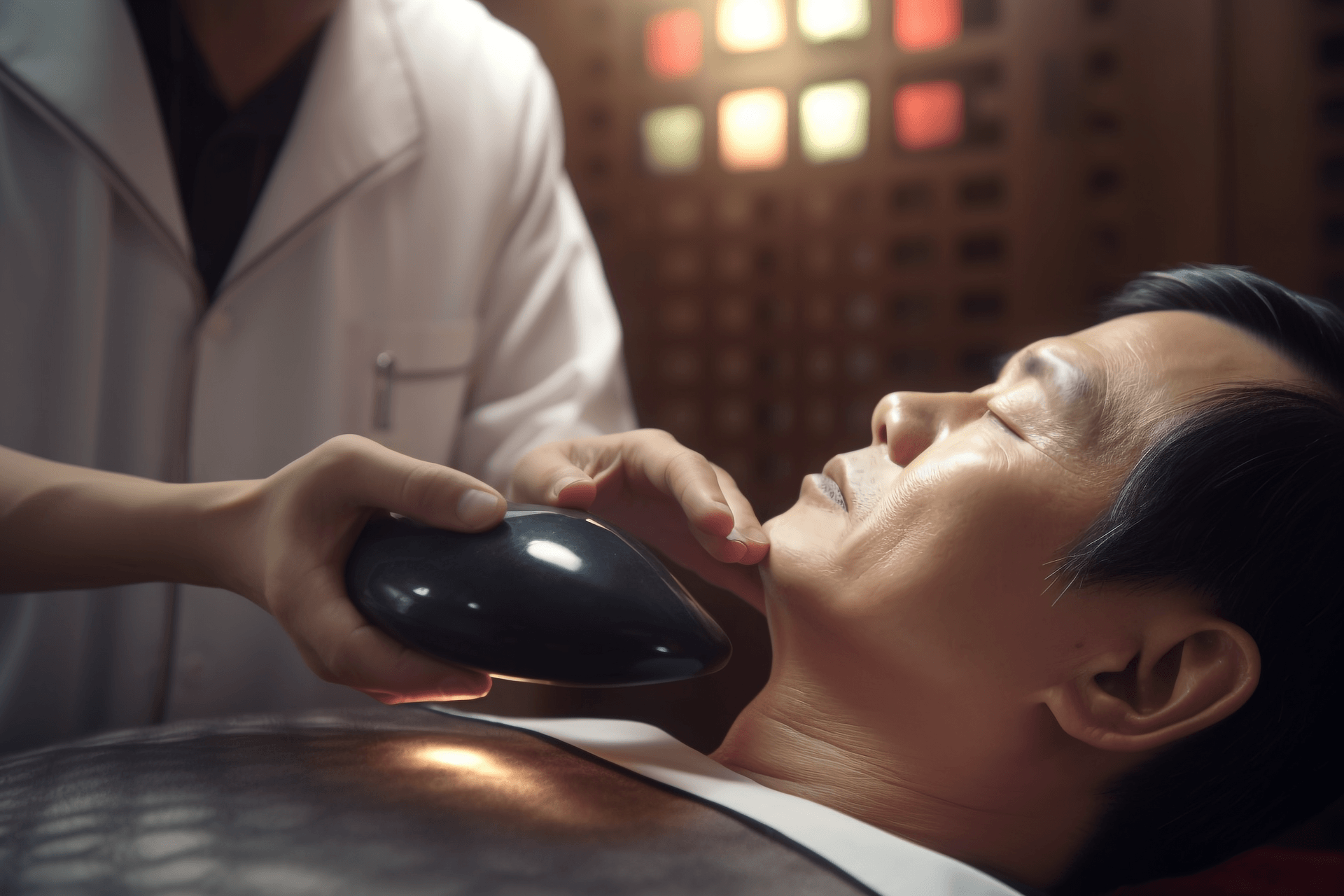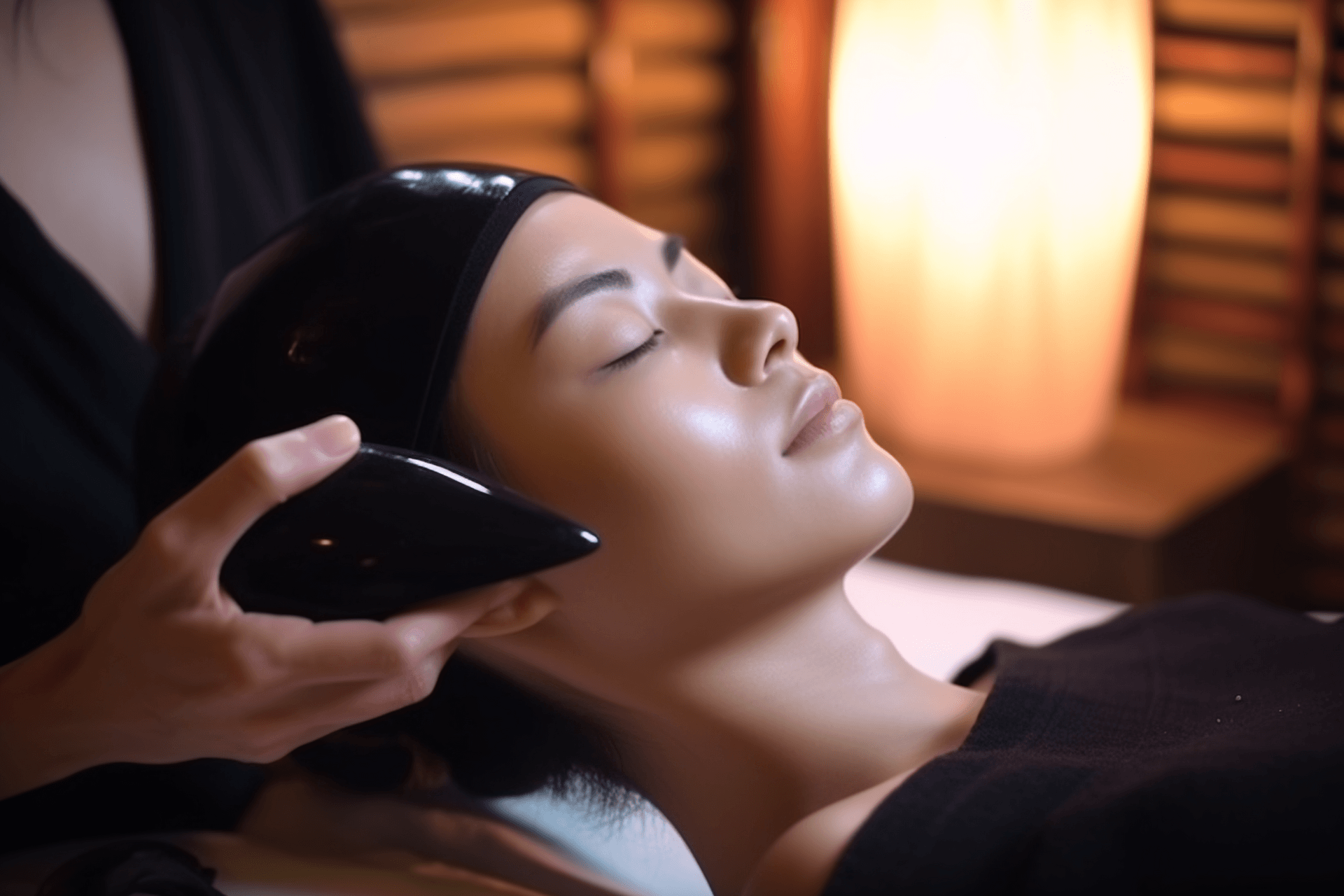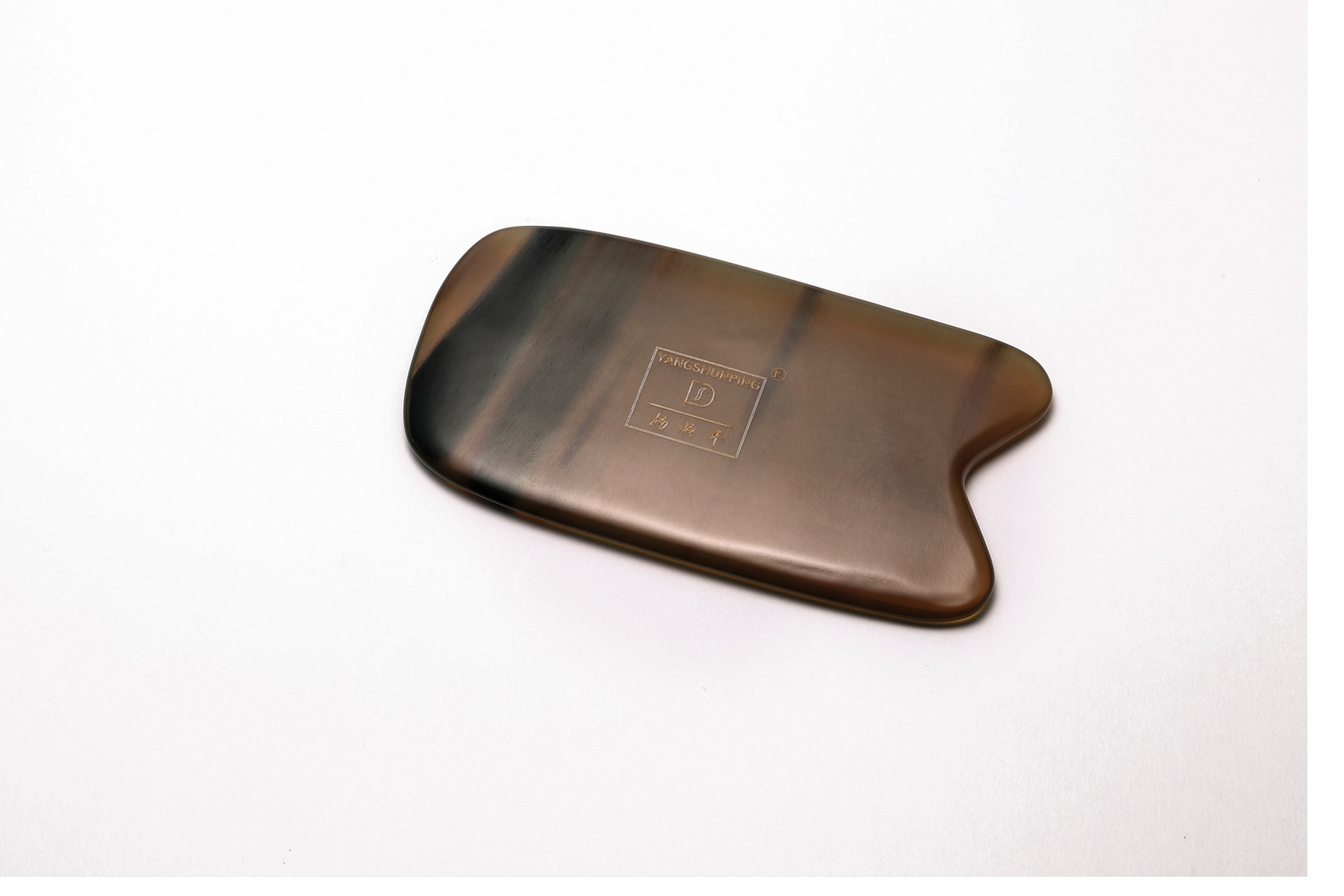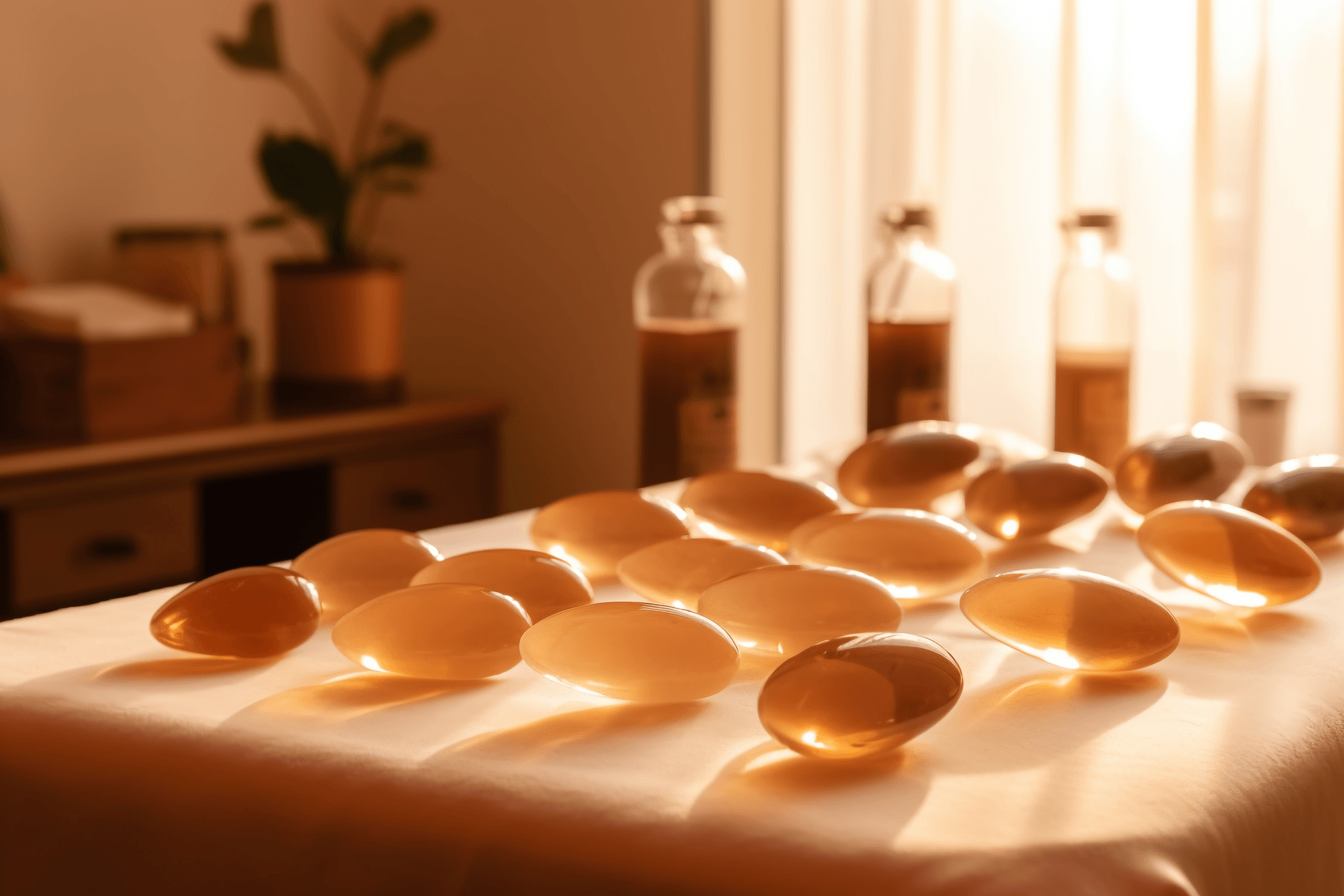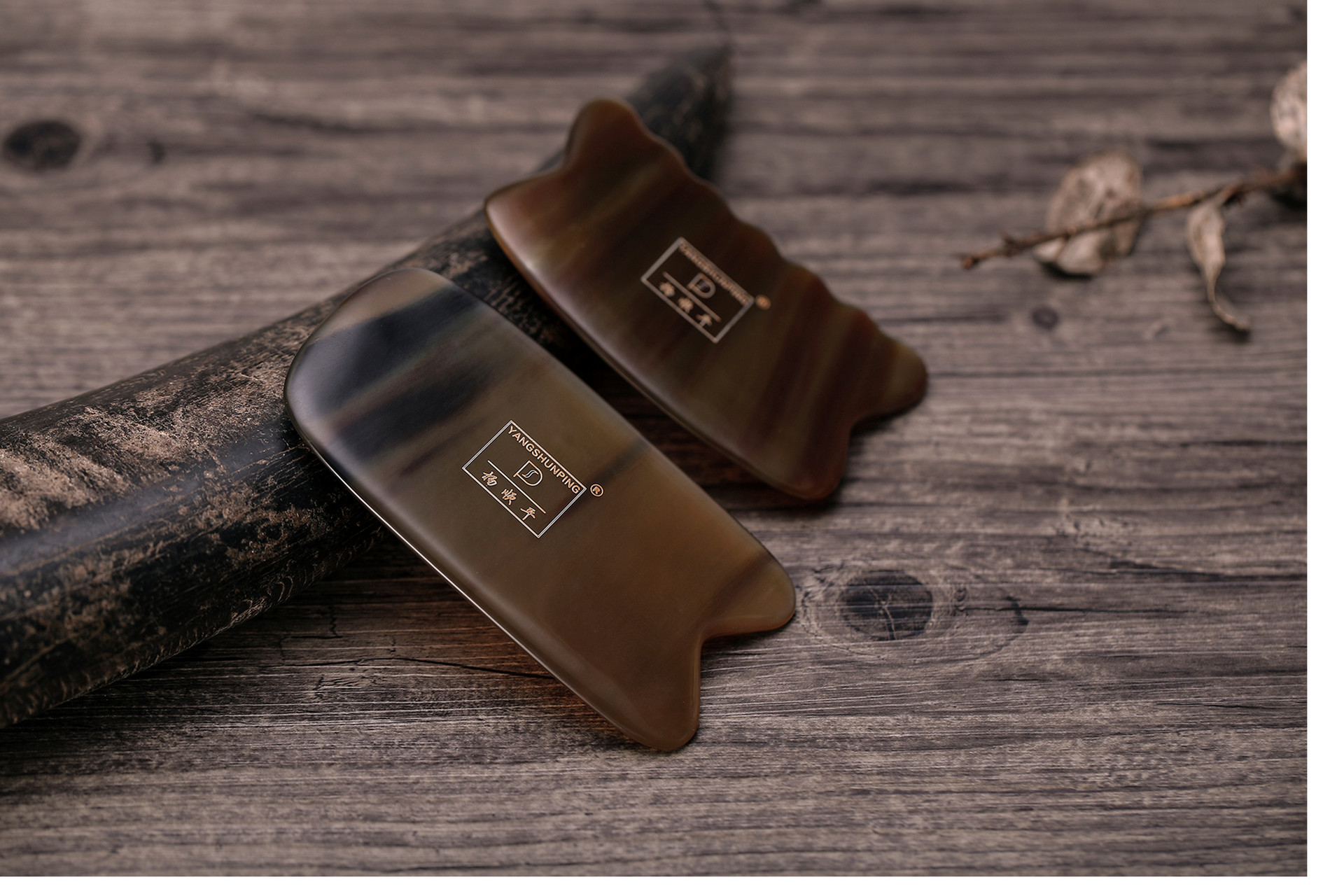When it comes to "Gua Sha," I believe many friends are familiar with it. Many people enjoy the process, but if it is done too vigorously, be careful of bleeding. It can actually be more harmful to the body. There are many benefits to Gua Sha, but the key is the technique. Therefore, for traditional Chinese medicine Gua Sha, it is important to control the intensity according to the actual situation.
The skin can bleed if Gua Sha is done too vigorously
Question 1: What exactly does "Sha" in Gua Sha refer to?
Answer: "Sha" is actually a red or purple spot or patch that can be seen under the skin. It is blood that contains metabolic products and is exuded outside the blood vessels. If there is rheumatic qi in the body, "Sha" will appear during Gua Sha. However, this rheumatic qi is not the only cause of "Sha." There are also some metabolic products in the blood. If there is a disturbance in blood circulation, it can also cause "Sha" to appear.
Question 2: Are the "Sha" and bruises the same thing?
Answer: Bruises are usually caused by injuries, resulting in varying degrees of damage to blood vessels, such as blood vessel rupture and significant bleeding. Bruised areas generally cause new pain and inconvenience in movement.
The red or purple spots that appear after Gua Sha are blood that seeps from the capillaries. Once Gua Sha stops, the appearance of "Sha" immediately stops. The amount of bleeding is minimal and does not exert pressure on the nerves. Therefore, after Gua Sha, there is no new pain. On the contrary, the excretion of "Sha" promotes blood circulation, increases the speed of metabolism, and facilitates toxin elimination, thus having a therapeutic effect.
Traditional Chinese medicine Gua Sha "principle" is based on the theory of etiology and pathogenesis, which is purely imaginary. The so-called "Sha" originally meant "sand," which refers to small bleeding spots on the skin. Large spots and bleeding spots are all "Sha." There are many diseases that can cause this subcutaneous bleeding, such as various acute infectious diseases, thrombocytopenia, leukemia, late-stage liver and kidney diseases, certain poisonings, etc. These are a large group of diseases with completely different causes and mechanisms.
To generalize them as "Sha syndrome" in traditional Chinese medicine is not only meaningless but also potentially dangerous. I once treated a patient with acute leukemia who was subjected to Gua Sha by a traditional Chinese medicine practitioner, which led to disseminated intravascular coagulation and nearly cost the patient's life.
In traditional Chinese medicine, "Sha" is believed to be formed by the invasion of "Sha toxins" into the skin. Gua Sha aims to eliminate these toxins by adjusting yin and yang, promoting blood circulation, and relaxing muscles and tendons.
When I was a child, my grandmother often gave me Gua Sha. She must be laughing in her grave because she could apparently adjust yin and yang, promote blood circulation, and relax muscles and tendons through Gua Sha.
Gua Sha is not that mysterious; its essence is simply subcutaneous bleeding (cupping is the same). There are two types of subcutaneous bleeding. One is spontaneous or persistent bleeding after injury, which is pathological and belongs to bleeding disorders caused by problems with blood vessels, platelets, or coagulation mechanisms, such as thrombocytopenia and hemophilia.
The other type is bleeding caused by injury, which includes Gua Sha and cupping. Under the physical action of the Gua Sha tool, the capillaries are forced to rupture, and blood seeps out of the blood vessels, resulting in small or large spots, which is the "Sha." There is no toxin involved. Some may ask why "Sha" appears in some areas but not in others, or why it appears sometimes but not all the time.
It is actually easy to understand. The areas where "Sha" appears more are areas with thin skin or high density of blood vessels, such as the elbows. Other areas can also produce "Sha" as long as enough force is applied.
Under the whip of the Nazis, the body was covered in "Sha." The skin manifestations of crush syndrome in earthquake victims are also "Sha." It is easier to produce "Sha" when suffering from heat stroke or fever because the superficial blood vessels are fully dilated during these times, making them more susceptible to physical damage, which is easy to understand.
That's the essence of Gua Sha, and there is nothing mysterious about it. It does not expel any toxins or stasis, nor does it improve microcirculation. These are all nonsense. It is simply artificially induced bleeding.
=====================
Question 3: What is the relationship between Gua Sha and detoxification?
Answer: "Sha" is actually blood containing pathological products. The body produces metabolic products every day, and these products should be excreted from the body in a timely manner through respiration, sweating, and excretion. However, when the functions of the body's organs weaken, these products can accumulate in the body and become endotoxins that harm health. Gua Sha can reflect the presence of these toxins.
Question 4: Does Gua Sha have the same anti-inflammatory effect as anti-inflammatory drugs?
Answer: The anti-inflammatory effect of Gua Sha is different from that of anti-inflammatory drugs. Gua Sha works by improving blood circulation, promoting metabolism, and enhancing the body's self-regulating ability to achieve anti-inflammatory effects.
Question 5: Is Gua Sha difficult to learn?
Answer: Gua Sha is very easy to learn, even without any medical knowledge. First, you must have Gua Sha oil and a Gua Sha tool. Gua Sha oil has a lubricating effect and contains some Chinese herbal ingredients that can promote blood circulation and relieve pain during the Gua Sha process, as well as prevent infection.
Currently, there are usually two types of Gua Sha tools on the market: water buffalo horn and jade. Nowadays, Gua Sha can not only treat pain but also diagnose diseases. For example, apply some Gua Sha oil to the third bone of the middle finger on the back of the hand. Apply the oil evenly and pay attention to the speed of Gua Sha, which should be slower, and apply some pressure. The back of the hand is actually a reflection of the spine, and different reactions after Gua Sha in different areas correspond to different conditions in the body.
Question 6: Can Gua Sha reduce fever and inflammation?
Answer: Gua Sha can reduce fever. This is mainly because fever is caused by the closure of the skin's pores, and Gua Sha can open the pores, allowing wind and cold to be expelled. Therefore, it has a fever-reducing effect. Local inflammation is a manifestation of congestion, redness, swelling, and accumulation of metabolic products. After Gua Sha, local circulation improves, metabolism accelerates, and pathological products such as bacteria and toxins can be excreted faster, thus reducing inflammation.
Question 7: Can Gua Sha treat diseases of the waist?
Answer: Gua Sha can treat diseases of the waist. When the waist is affected, the strength on both sides is imbalanced, and there is dysfunction in the small joints. Gua Sha can balance the muscle strength on both sides and correct the dysfunction of the small joints, achieving a therapeutic effect.
Question 8: Is it necessary to use Gua Sha oil for Gua Sha? Can other oils like Red Flower Oil be used instead?
Answer: Many people think that Red Flower Oil can be used for Gua Sha because safflower itself can promote blood circulation and eliminate stasis. However, the safflower in Red Flower Oil is the main ingredient, and there are many auxiliary ingredients that can irritate the skin. Using it for Gua Sha can increase skin irritation. Regular use can make the skin rough, allergic, and prone to rashes and dark spots.
Question 9: Can Gua Sha have an effect on cardiovascular and cerebrovascular diseases?
Answer: Gua Sha can not only treat cervical spondylosis, back and leg pain, shoulder periarthritis, and osteophyte formation, but it also has the function of regulating internal organs because specific parts of Gua Sha are connected to internal organs. For example, the meridian of the little finger is directly connected to the heart.



